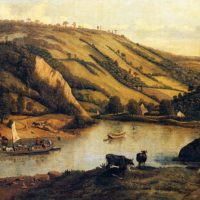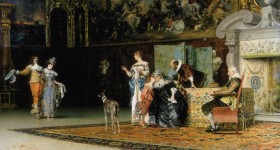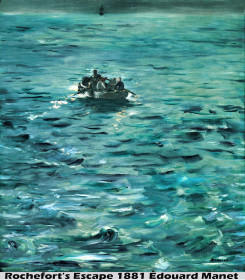Paintings of 1881
A child with his chimney-sweeping tools on his shoulders, the regular black clothing of a sweep, a bowl of meal and a little grin of having a break for meal after the tiresome work-hours represents a perfect, happy and satisfied embodiment of a child-sweep from the 19th century by the artist in this genre painting. But, the current painting is not even near to the actual situations of the real child sweep in old times. They were more similar to the African slaves before the whites left the job and Africans were imported and forced to do the job. In old times, until around the end of the 19th century, small kids were used as sweep (kids as little as 4 years old). After the […]
Luncheon of the Boating Party has been one of the known painting by the French artist Renoir born in 19th century. The painting stands as a celebrative depiction a merry company type gathering. Despite being just a regular day, it boasts about goodness of general life. Luncheon of the Boating Party Analysis The depiction is made in the similar strokes of his another painting The Ball at the Moulin de la Galette. Small, light toned strokes for a smooth output. This unique depiction way makes the whole picture a bit blurry as the lines aren’t hard enough in compare to other conventional methods. Subject matter of the painting is apparent. Some people have gathered at a house’s balcony to have some good time. Total of […]
Being an orientalist painter, Filippo Baratti produced paintings mostly based on the East Asian cultures. He, himself was a Hungarian painter, who took great interest in eastern cultures and had a knack to depict them with cultural respects. Middle Asian Islamic Culture The current painting represents a middle Asian or northern South African culture where harems (separate buildings for wives and concubines in Muslim culture, restricted for unauthorized people to enter) were the part of the royal and aristocratic society. The painting is more than 100 years old. The exact date isn’t specified. But, we can assume that at the time of the depiction, the Harem practice was very province and normal as even today, in some Muslim countries the custom of harem is in […]




















 (2 votes, average: 4.50 out of 5)
(2 votes, average: 4.50 out of 5)
